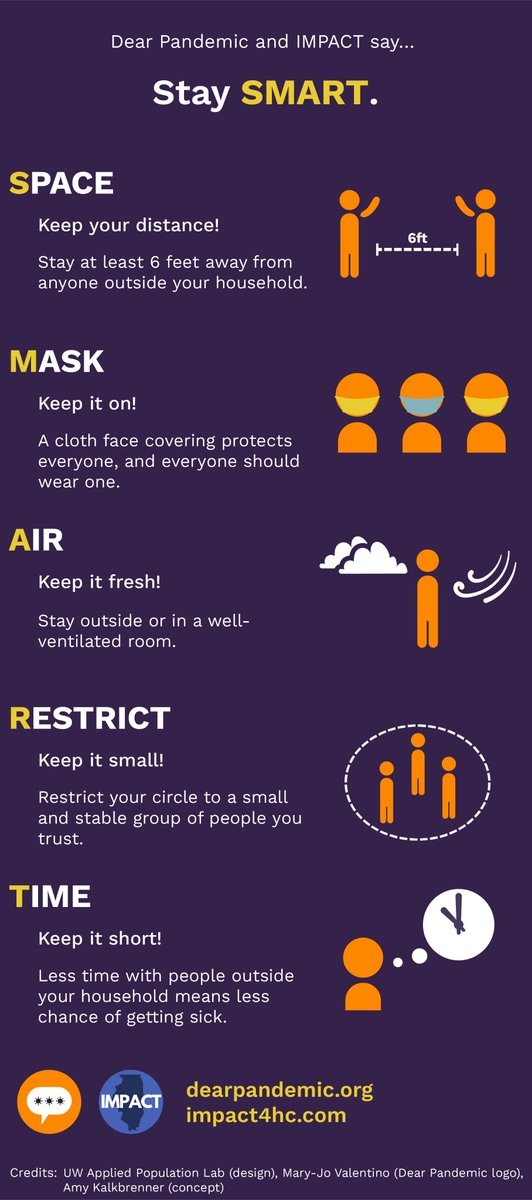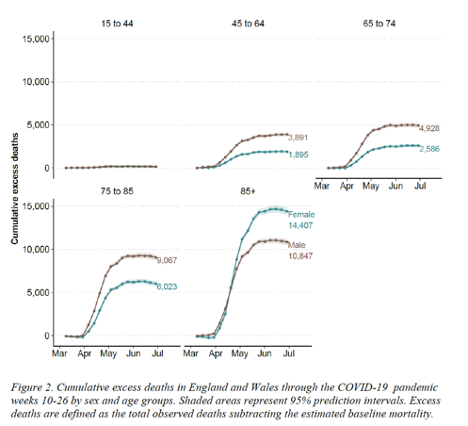1/ In this opinion for @guardian, I discuss exponential growth, natural herd immunity, and how to prioritize mitigation strategies going forward. A thread: theguardian.com/commentisfree/… @trishgreenhalgh @melindacmills @OxfordDemSci
2/ To borrow from fellow @DearPandemic Nerdy Girl @lindseyleninger, “Exponential growth sucks.” I used a different word in print but it seems a propos for twitter. This sharp upward trajectory means cases (and then hospitalizations & deaths) can quickly get out of hand.
3/ On the + side, cutting off growth sooner pays big dividends in avoided cases. Since we only measured the tip of the iceberg of cases last Spring, we are likely in a much better place despite the large # of confirmed cases. This means we still have a chance to intervene early.
4/ What about the idea of shielding vulnerable & achieving natural herd immunity? Open debate is critical, so we shouldn’t dismiss ideas out of hand. But this strategy entails great risks & thus requires a high threshold of evidence & detail on specifics.
5/ Practically, how would shielding work? Age cut-offs? The risk of death rises exponentially w/ age, what cutoff is acceptable- 60, 65? Men have roughly double the risk of death compared to women of the same age—do we make the age cut-off higher for women or lower for men?
6/ What about co-morbidities? 35% of people ages 45-64 in the UK are obese. Almost 20% of 50-59 year olds have diabetes. That’s not adding in other immunosuppressive conditions like cancer treatments or chronic lung disease.
7/ Given the differences in mortality risk by both social class and race/ethnicity, how would these be worked into a risk calculator? Disadvantaged groups also least likely to have jobs or living situations allowing one to shield.
8/ In the UK overall, 15% of residents 70+ live in a household w/ a working age adult, rising to 24% in London. Besides multi-generational households, regular contact across age groups happens in workplaces, care homes & hospitals.
https://twitter.com/AdamJKucharski/status/1308851539805700098?s=20
9/ For ex. 59 year-olds still working with younger cohorts often live with family members slightly older, creating easy transmission bridges from young to old, *especially* if community transmission is high as in the natural herd immunity scenario.
10/ Without suppressing the virus, strategic shielding won’t magically return us to a pre-Covid economy. Under 65s are already doing a lot of voluntary shielding based on their perceptions of risk. I love eating out, but am still foregoing indoor dining and many other activities.
11/ Such a strategy assumes no harmful effects of COVID-19 short of mortality. Besides hospital or ICU, younger people are vulnerable to potentially debilitating effects of #LongCovid, which are only beginning to be documented & studied. @Dr2NisreenAlwan
https://twitter.com/Dr2NisreenAlwan/status/1309079121163685888?s=20
12/ The durability of immunity & whether one can transmit upon re-infection are matters of open debate. Vaccine-induced immunity may be more robust and durable, and thus worth waiting for:
https://twitter.com/VirusesImmunity/status/1308159666317340673?s=20
13/ So what to do? Use what we’ve learned about transmission & sacrifice high risk activities (indoor, close contact no masks, loud talking) to save our social contact budget for essential things like SCHOOLS. #StaySMART @DearPandemic @IMPACT4HC 

14/ Sadly this hits the hospitality industry hard, & we should do all we can to support those sectors sacrificing the most for public health. It seems like it will last forever, but it won't.
15/ Masks in schools. Even in class. Even younger kids. I know this gets people riled up, but for a respiratory virus spread largely by exhalations from asymptomatic & pre-symptomatic individuals, masks create a physical barrier & trap a portion of inbound & outbound virus. 

16/ Imperfect protection is still protection—we use seatbelts, airbags, & crumple zones to protect us in car crashes, & we need multiple layers of protection for COVID as well. It doesn’t have to be perfect to have a big impact.
17/ Kids & teachers in school are not able to avoid being indoors for long durations & talking, so masks are a crucial prevention tool to minimize transmission & keep kids in school longer. Kids often better at masking than adults, & empathetic about the idea of helping others. 

18/ Keeping kids in school should be a priority using all the layers of protection at our disposal. Finally please read this thoughtful piece by @devisridhar on herd immunity. scotsman.com/news/opinion/c…
• • •
Missing some Tweet in this thread? You can try to
force a refresh








